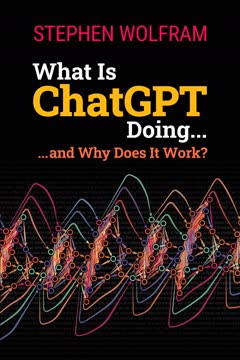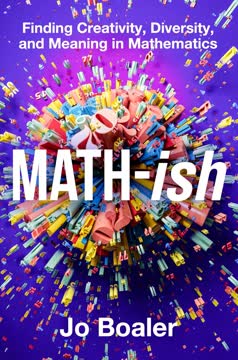Key Takeaways
1. Flip Your Classroom: Shift Instruction for Personalized Learning
The flipped classroom can address the needs of students such as Enrique, Janice, and Ashley by allowing their teachers to personalize the students’ education.
Personalized Education. The core idea behind flipping the classroom is to tailor education to individual student needs. Traditional classrooms often struggle to reach students with diverse learning styles, paces, and backgrounds. By shifting direct instruction outside of class, teachers can use class time to provide personalized support, address individual challenges, and foster deeper understanding.
Addressing Diverse Needs. Students like Enrique, who struggle with the pace of traditional lectures, can pause and rewind video lessons. Busy students like Janice can access content anytime, anywhere. Students like Ashley, who excel at "playing school" but lack true understanding, can engage in more meaningful activities and receive targeted feedback.
Beyond the Traditional Model. The flipped classroom model challenges the traditional, industrial-era approach to education. It moves away from the assembly-line model where all students receive the same instruction at the same pace. Instead, it embraces a more flexible and student-centered approach that empowers teachers to meet the unique needs of each learner.
2. The Flipped Classroom Model: Homework Becomes Classwork
Basically the concept of a flipped class is this: that which is traditionally done in class is now done at home, and that which is traditionally done as homework is now completed in class.
Reversing Roles. The flipped classroom fundamentally changes the roles of in-class and out-of-class activities. Instead of listening to lectures in class and completing assignments at home, students watch instructional videos at home and engage in hands-on activities, problem-solving, and collaborative projects in class. This shift allows teachers to maximize their impact during class time.
Restructured Class Time. Class time is no longer dominated by lectures. Instead, it becomes a dynamic space for active learning. Teachers can circulate, provide individualized support, facilitate group discussions, and guide students through challenging tasks. This creates a more engaging and effective learning environment.
Example in Practice. In an AP chemistry class, students watch a video lecture at home. In class, they ask questions about the video, work on practice problems, conduct labs, and receive personalized feedback from the teacher. This allows the teacher to address misconceptions, provide targeted support, and foster deeper understanding of the material.
3. Why Flip? Speaking the Language of Today's Students
Flipping speaks the language of today’s students.
Digital Natives. Today's students are digital natives, comfortable with technology and accustomed to accessing information online. Flipping the classroom leverages this familiarity by using video lectures and online resources. This approach can be more engaging and relevant for students who have grown up with technology.
Flexibility and Control. The flipped classroom provides students with greater flexibility and control over their learning. They can watch videos at their own pace, rewind and rewatch sections as needed, and access content anytime, anywhere. This empowers them to take ownership of their learning.
Beyond Technology. While technology is a key component of the flipped classroom, it's not the only factor. The flipped classroom is about more than just using videos. It's about creating a student-centered learning environment that fosters engagement, collaboration, and deeper understanding.
4. Flipping Logistics: Videos and Class Time
Probably the single most daunting task teachers face when trying to flip the classroom is accessing or producing high-quality videos.
Video Options. Teachers have two main options for videos: creating their own or using existing ones. Creating videos requires time and effort but allows for customization and personalization. Using existing videos can save time but may require careful selection to ensure quality and alignment with curriculum goals.
Video Creation Tips. If creating your own videos, keep them short, animate your voice, add humor, and avoid wasting students' time. Use annotations, callouts, and zoom features to highlight key information. Ensure videos are copyright-friendly.
Maximizing Class Time. The flipped classroom frees up class time for engaging activities. This time can be used for labs, inquiry-based learning, problem-solving, discussions, and project-based learning. The key is to design activities that promote active learning and deeper understanding.
5. Mastery Learning: Personalized Pace and Objectives
He argued that almost all students can master any content, given enough time and support.
Core Principles. Mastery learning is an educational approach where students progress through a series of objectives at their own pace. It emphasizes demonstrating mastery of each objective before moving on to the next. This approach ensures that all students have a solid foundation of knowledge.
Key Components. The key components of mastery learning include:
- Students working at their own pace
- Formative assessment to gauge understanding
- Summative assessments to demonstrate mastery
- Remediation for students who don't master objectives
Technology's Role. Technology can help overcome the challenges of implementing mastery learning. Prerecorded videos allow students to review content as needed. Computer-based assessments provide immediate feedback and reduce grading time.
6. Flipped-Mastery Classroom: Asynchronous Learning Hub
Basically, all students are working on different activities at different times.
Asynchronous Activities. In a flipped-mastery classroom, students engage in a variety of activities at different times. Some may be watching videos, others conducting experiments, and still others taking assessments. This creates a dynamic and personalized learning environment.
Teacher's Role. The teacher acts as a facilitator, moving around the room to provide support, guidance, and feedback. They may lead small group discussions, provide individualized remediation, or conduct demonstrations. The teacher's role is to meet each student's individual needs.
Essential Characteristics. To thrive in a flipped-mastery environment, teachers should be content masters, willing to admit when they don't know the answer, able to flow through a class period in a nonlinear fashion, and able to relinquish control of the learning process to the students.
7. Why Flipped-Mastery? Student Responsibility and Differentiation
Our classrooms are now laboratories of education where students take responsibility for their own learning.
Student Ownership. The flipped-mastery model places the responsibility for learning squarely on the students. They must take initiative, manage their time, and seek help when needed. This fosters a sense of ownership and empowers students to become self-directed learners.
Personalized Differentiation. The model allows for easy personalization and differentiation. Students can work at their own pace, access resources tailored to their needs, and demonstrate mastery in a variety of ways. This ensures that all students are challenged and supported.
Learning-Centered Classroom. The focus shifts from teaching to learning. The classroom becomes a hub of activity where students are actively engaged in constructing knowledge. The teacher acts as a guide, providing support and feedback as needed.
8. Assessment in Flipped-Mastery: Formative and Summative
We think the key is for students to identify learning as their goal, instead of striving for the completion of assignments.
Formative Assessment. Formative assessments are ongoing checks for understanding. Teachers use questioning strategies, observe student work, and provide immediate feedback. This helps identify misconceptions and guide students toward mastery.
Summative Assessment. Summative assessments are used to demonstrate mastery of learning objectives. These can include traditional exams, lab reports, presentations, or other projects. Students must meet a minimum level of proficiency to move on.
Technology Integration. Computer-based testing systems can streamline the assessment process. These systems can generate multiple versions of exams, provide immediate feedback, and track student progress. This saves time and allows teachers to focus on providing personalized support.
9. Addressing Concerns: Access, Engagement, and Integrity
We are not naive—we realize that some students will always try to get around the rules and will make poor choices.
Equitable Access. Addressing the digital divide is crucial. Provide multiple options for accessing videos, such as online hosting, school servers, DVDs, and portable devices. Work with your IT department to ensure all students have access to the necessary technology.
Student Engagement. Address concerns about students not watching videos by checking notes, requiring questions, and allowing in-class viewing. Emphasize the benefits of watching videos, such as access to tutorial time and the ability to complete assignments in class.
Test Integrity. Implement measures to prevent cheating, such as computer-based testing, password protection, and in-class administration. Consider using open-Internet tests that focus on problem-solving and data analysis rather than rote memorization.
10. The Teacher's Role: From Presenter to Learning Coach
I don’t have to go to school and perform five times a day. Instead I spend my days interacting with and helping my students.
Shift in Focus. The teacher's role shifts from presenter of information to learning coach. Instead of lecturing, teachers spend their time interacting with students, providing individualized support, and facilitating group discussions. This creates a more engaging and effective learning environment.
Building Relationships. Flipping allows teachers to build stronger relationships with their students. They have more time to listen, encourage, and provide personalized guidance. This fosters a sense of trust and creates a more supportive learning environment.
Empowering Students. The ultimate goal is to empower students to become self-directed learners. By providing them with the tools, resources, and support they need, teachers can help them develop the skills and habits necessary for lifelong learning.
Last updated:
Review Summary
Flip Your Classroom receives mostly positive reviews, with readers praising its practical advice, concise presentation, and honest approach to implementing flipped learning. Teachers appreciate the authors' experience and find the book helpful for understanding and implementing the flipped classroom model. Some reviewers note that the book focuses mainly on high school settings and could benefit from more examples for different subjects and age groups. Overall, readers find it a valuable introduction to flipped learning, though some desire more in-depth information.
Similar Books










Download PDF
Download EPUB
.epub digital book format is ideal for reading ebooks on phones, tablets, and e-readers.




